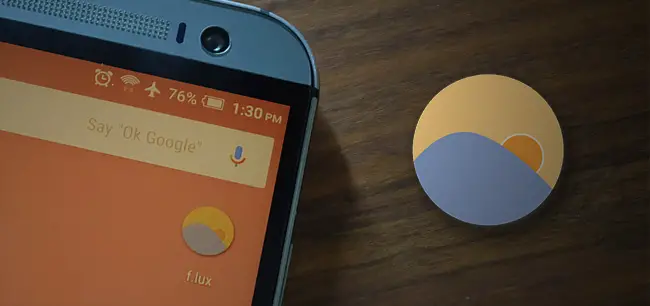When it comes to the many technological innovations and ideas pushing forward a sea of apps and extensions over the years, how many of those innovations have become utterly indispensable in your life? Sure, there’s likely a few that you can scarcely imagine yourself living without, but how many are there really dominating that list?
More importantly for the thrifty college student, how many of those life-changing innovations are completely free?
F.lux is quickly growing a cult-like following of devoted fans who have come to realize the tremendous benefits and productivity that it has to offer. The fact that this industrious app exists as freeware means that you will not have seen a single paid advertisement for it. Fortunately, with the aforementioned following growing at such a rapid pace, word of mouth alone has been enough to make this productivity booster a near-household name in the online communities dealing with one of the modern world’s growing epidemics: insomnia.
The true magic of the F.lux app lies in the fact that this tool was designed to help facilitate one of the most important and often overlooked aspect of living a healthy, productive life: proper, natural sleep.
In order to understand how this technology works, it is first necessary to understand some of the science behind F.lux’s main goal of changing the color temperature of your preferred electronic device. In simple terms, visible light is made up of several different wavelengths, which our eyes then interpret as color, and these can be interpreted on a temperature scale.
As the day naturally progresses, so does the color temperature. This changing temperature coincides with our natural circadian rhythm, which is of course related to several vital processes in the human body, but most importantly to our cycle of waking and sleeping. Human beings have evolved alongside these natural shifts in color temperature in such a manner that as the day progresses, being exposed to these fluctuations in outside lighting, our bodies instinctually ramp up their natural production of the master sleep hormone, melatonin.
However, with our growing dependence on electronics, all of which emit unnatural sources of bright lights that completely go against these natural patterns of color temperature, our circadian rhythms stand the risk of being completely thrown off balance. By exposing ourselves to bright sources of light all day, such as computer or tablet screens, our bodies are never given the necessary signals to wind down for the night, and to kick start the production of the necessary hormones for a sound and restful sleep.
The result is obvious yet insidious, which include nights of restlessness and days spent half-awake with overall productivity, health and well-being sacrificed at the expense of a night spent glued to a computer screen.
Fortunately, with the innovation that is F.lux, the modern technology connoisseur can effectively have their cake and eat it, too.
F.lux fixes this problem by working with your preferred piece of technology to better coincide with the natural fluctuations in color temperature, automatically adjusting the color temperature output by the screen in accordance with the current time, personal preferences, and a custom wake/sleep schedule set by the user. This is a far-cry from the simple adjustment of ambient lighting that is offered automatically by most modern smartphones already, as none of these other options actually control the amount of blue light that is emitted by the screen (the type of light that is most notorious for interfering with the body’s natural production of melatonin) and as such, will have nowhere near the desired effect that F.lux offers to its users.
In practice, there won’t be much of any discernible difference when using F.lux during the day, but as the day progresses, the user will begin to notice that the screen will slowly take on a sort of orange tint, which will grow more pronounced as the day goes on. Admittedly, the full tint that occurs near the end of the day may take some getting used to at first. Indeed, it can prove to be annoying when attempting to watch certain shows or films, but the good news is that for those who need to bypass the app temporarily for the sake of work or play, the ease of use along with the slick interface makes this exceedingly easy to do.
In the long run, however, it is best to just try to get used to the subtle changes, and after a week or two of using the app, most users find that the changes in tint don’t hamper their enjoyment or work capacity in the slightest. Even if there is some slight annoyance or hindrance to be found in the short term, the long term benefits that come with the user testimonials speaking to increased daytime productivity, health and well-being fueled by the best sleep of their lives is more than enough for me to say, with absolute confidence, that the long term benefits are surely worth giving it an honest chance.
Overall, the best part about F.lux is in the way that it works with our bodies to solve our modern crisis of sleepless nights, along with the nonexistent risk and investment that comes with the app itself. No sleep aids that run the risk of developing a dependency and running up untold amounts of possible damage on the organs when used over time, and no pesky advertisements spawning from the new extension that you just added to your web browser. Just a sound, restful night of sleep, the way it was meant to be all along.

















